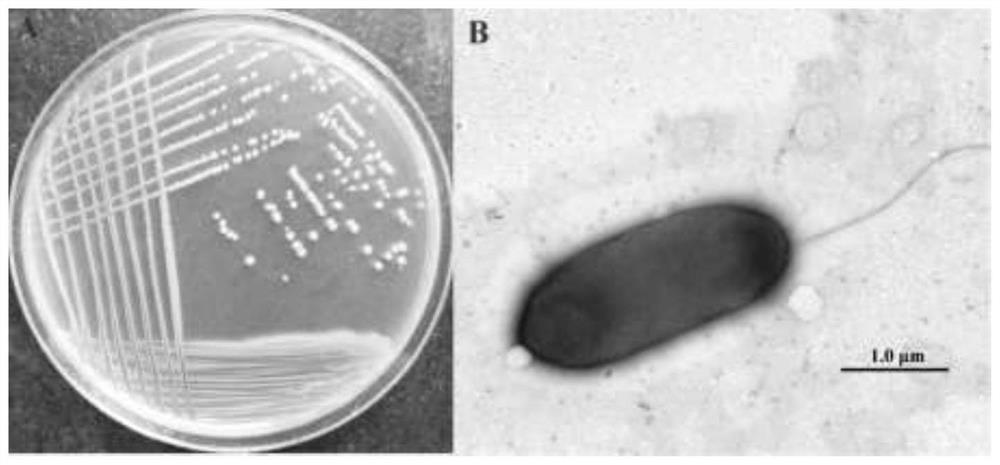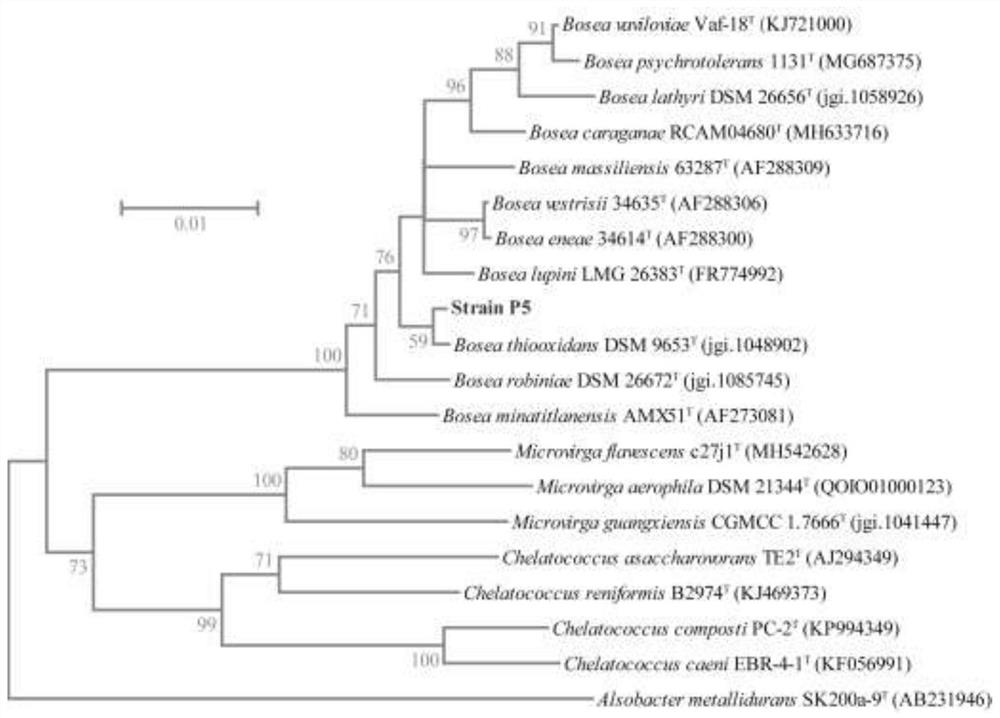Strain for specifically degrading herbicide propanil, amidase degrading gene and application
A technology of amidase and degrading bacteria, applied in the field of degrading amidase gene and application, can solve the problems of toxicity and carcinogenicity
- Summary
- Abstract
- Description
- Claims
- Application Information
AI Technical Summary
Problems solved by technology
Method used
Image
Examples
Embodiment 1
[0036] The isolation and identification of embodiment 1 bacterial strain
[0037] The invention provides a bacterial strain capable of specifically and efficiently degrading the herbicide propanil and its degrading amidase gene and application thereof. The bacterial strain used is a Gram stain-negative strain P5, which is isolated from the soil of an abandoned pesticide factory in Xinyi, Jiangsu. The specific isolation and screening methods for strains are as follows:
[0038] Take 10.0 g of the soil sample and add it to 100 mL of liquid inorganic salt medium (hereinafter referred to as MSM) containing 30 mg / L propanil, culture it on a shaker at 30°C and 180 rpm for 7 days, and transfer it to fresh In MSM, serial enrichment was subcultured four times. Use an ultraviolet spectrophotometer to scan in the range of 200-350nm to detect the degradation effect of the fifth-generation enrichment solution. Dilute and spread the effective enrichment solution on inorganic salt solid me...
Embodiment 2
[0040] Example 2 Evaluation of the effect of strain P5 on degrading propanil and analysis of metabolites
[0041] 1.1 Preparation of seed solution
[0042]Insert bacterial strain P5 (CCTCC M 2021603) containing 30mg L -1 Cultivate propannil in 100mL LB medium at 30°C and 160rpm on a shaker, collect the bacteria by centrifugation at 6,000rpm after 48 hours, wash the bacteria twice with sterilized MM medium, and finally resuspend with 10mL MM medium as seeds liquid for use.
[0043] 1.2 Degradation of the herbicide propanil by strain P5
[0044] The bacterial strain P5 seed liquid is received respectively to contain 30mg L by the inoculum amount of 5%. -1 Propannil 100mL MM culture medium, 30 ℃, 160rpm shaker culture. Every 24 hours, take 3 mL of culture solution, extract with an equal volume of dichloromethane, remove water with anhydrous sodium sulfate, take 2 mL of organic phase and blow dry, then redissolve in 0.5 mL of methanol, filter with a filter membrane (pore size ...
Embodiment 3
[0064] Example 3 High-efficiency expression and purification of the amidase gene that specifically degrades propanil in Escherichia coli BL21[pET-29a(+)]
[0065] 3.1 PCR amplification of the amidase gene that specifically degrades propanil
[0066] With forward primer F1:5'-AAA CATATG TCACATGATCAACAGGGCCCCAAAA-3' (SEQ ID NO.3) and reverse primer R1:5'-TAT AAGCTT Using TGACCGCGTGTCGCCCCC-3' (SEQ ID NO.4) as a primer, the amidase gene fragment that specifically degrades propanil is amplified from the Boseasp.P5 genome by PCR.
[0067] Amplification system:
[0068]
[0069] PCR amplification program:
[0070]
[0071]
[0072] 3.2 PCR products and vectors were digested step by step with Nde I and Hind III.
[0074]
[0075] The digested product was purified and recovered with a purification recovery kit.
[0076] 3.3 Transformation and expression
[0077] The DNA fragment digested in 3.2, pET-29a(+) was enzyme-ligated (refer ...
PUM
 Login to View More
Login to View More Abstract
Description
Claims
Application Information
 Login to View More
Login to View More - R&D
- Intellectual Property
- Life Sciences
- Materials
- Tech Scout
- Unparalleled Data Quality
- Higher Quality Content
- 60% Fewer Hallucinations
Browse by: Latest US Patents, China's latest patents, Technical Efficacy Thesaurus, Application Domain, Technology Topic, Popular Technical Reports.
© 2025 PatSnap. All rights reserved.Legal|Privacy policy|Modern Slavery Act Transparency Statement|Sitemap|About US| Contact US: help@patsnap.com



